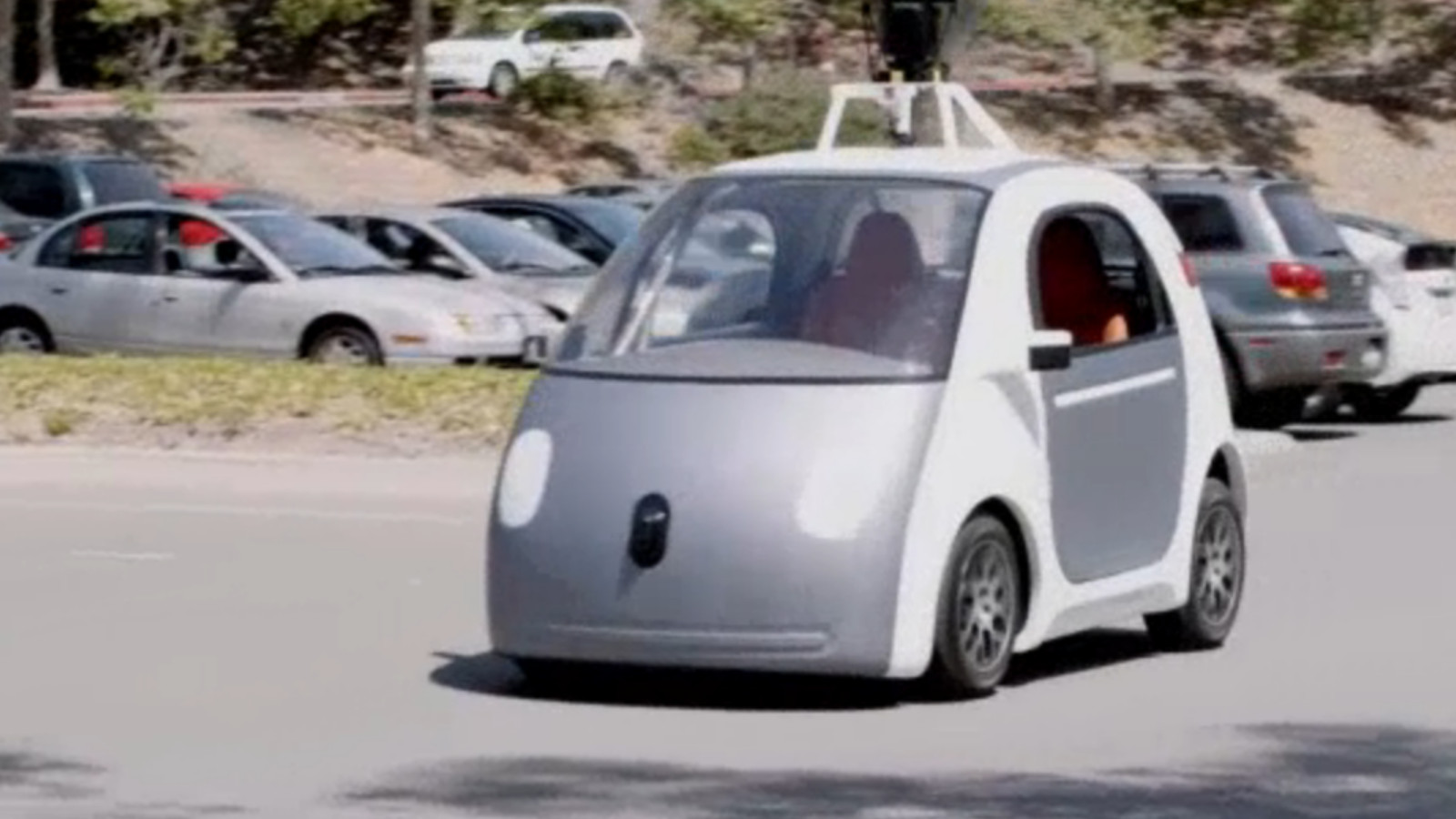Google leaves the steering wheel behind with its new self-driving car
Plans for 100 prototypes over two years

While Google has been tinkering with self-driving cars for a while, its own prototype has been unveiled, noticeably without a steering wheel, accelerator and brake pedal.
Unveiled at the 2014 Code Conference by Google's co-founder Sergey Brin, the two-seater prototype also doesn't have a stereo, any mirrors or even a glove compartment.
The electric car does however have a 360-degree roof-mounted sensor, leaving no blind spots and no need for Google employees to monitor the progress of the car.
The sensor combine environmental, radar and camera technology to provide the car with the 360-degree view.
Safety first
Without brakes and a steering wheel, safety does still take priority in the build of Google's as-yet-nameless, self-driving car.
It can also only go up to a maximum speed of 25 miles (40kms) an hour, while the compact design has 2 feet of foam in the front and flexible plastic windshields.
For unexpected problems, the car also has two sets of steering and braking systems built-in - just in case one fails.
Sign up for breaking news, reviews, opinion, top tech deals, and more.
"It should be far safer than any other car for pedestrians," Brin noted at the conference.
Driving Google
While only in prototype stages, Google has hopes to build another 100-200 prototypes over the next 2 years.
"The main reason the team and I decided to build this prototype vehicle is that we can do a better job than we can do with an existing vehicle," Brin said.
Though Google has hopes to see self-driving cars on the road by 2018, Brin doesn't see it happening soon, but Google does have a vision for self-driving cars.
"During peak driving, 30 percent of driving in a city is people looking for parking. That goes away if you have cars that drive themselves and drop you off and go find another passenger."
Via: Re/code